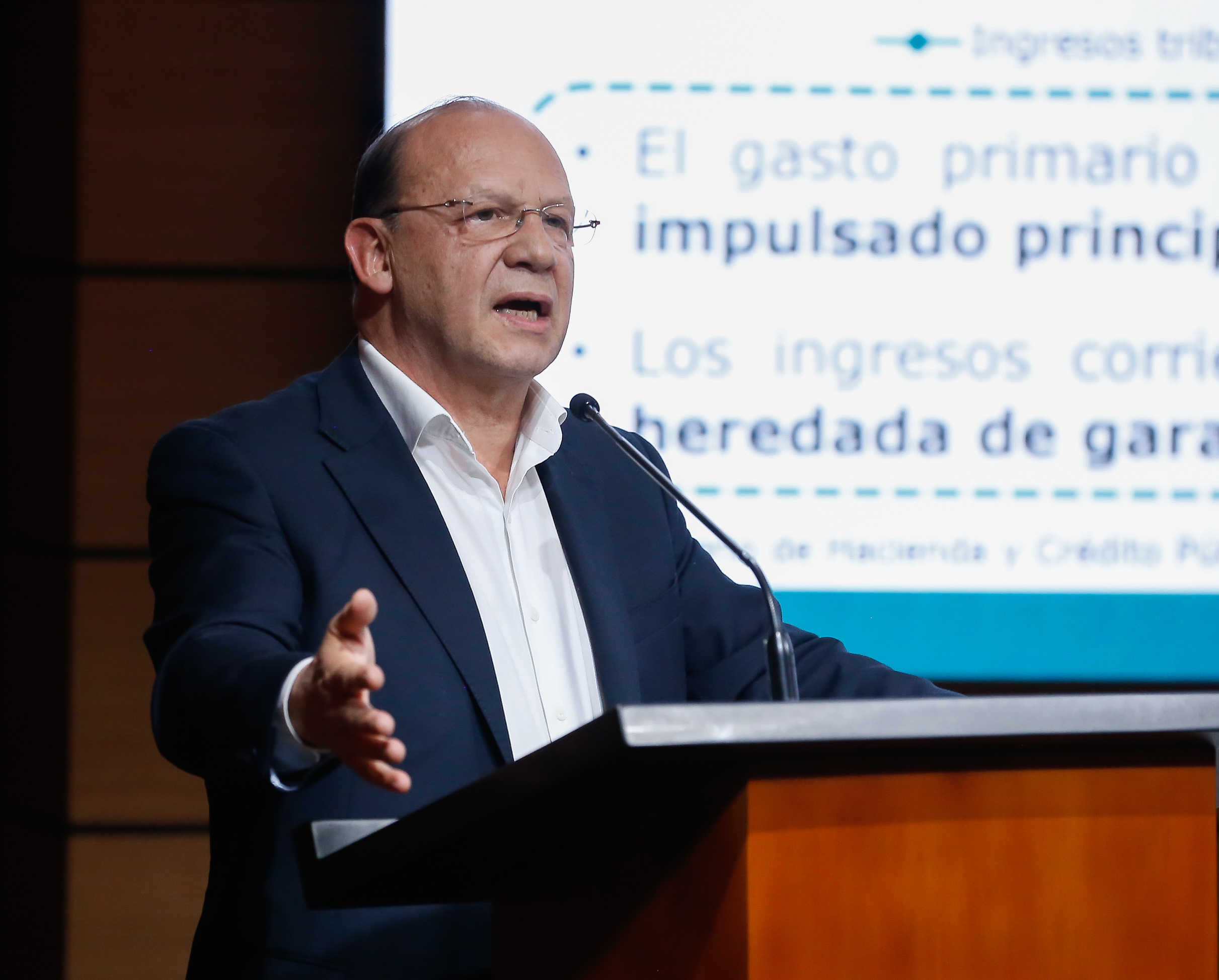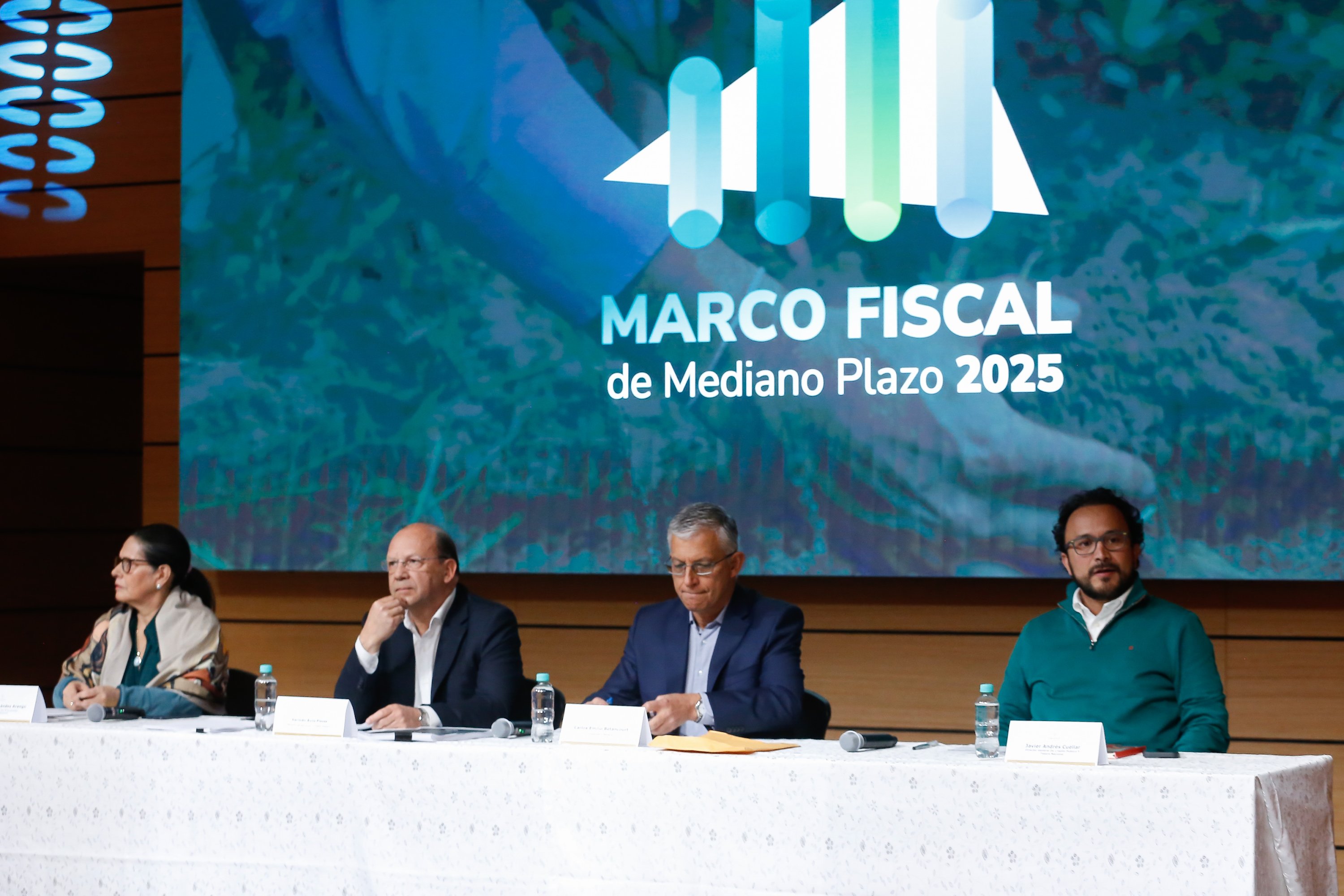The fiscal deficit will reach 7.1 percent, the government announces, two points higher than the figure indicated in the financial plan.

After making the respective updates to this year's Financial Plan, the National Government estimated that the fiscal deficit for 2025 will increase by two percentage points, going from the projected 5.1 percent to 7.1 percent, as revealed by Germán Ávila, Minister of Finance and Public Credit, who announced, during the presentation of the updated Medium-Term Fiscal Framework, that a tax reform will be presented at the end of July, which could raise 19 trillion pesos.
According to the official, this represents a major tax pact involving all the country's economic stakeholders, but it will be necessary to restore the nation's financial balance.
As anticipated by the official, this tax reform will include modifications to the VAT, but will not consider a general VAT, but rather for some specific sectors, explained Minister Ávila Plazas, who added that a careful review will be carried out to allow for a reduction in tax expenditure, which is 135 trillion pesos, or 8.5 points of GDP, of which 65 percent of this tax expenditure is associated with VAT, about 89 trillion pesos in exemptions, which will be reviewed, since there are significant possibilities to increase collection.
Key points There are also 1.3 percentage points of GDP in exemptions for income tax, equivalent to 22 trillion pesos, and 26 trillion pesos for individuals, which have the potential to reduce this tax expenditure. This will be carefully reviewed in light of the new reform that will be presented to Congress in the second half of 2025.
In the case of VAT, this will be the strategy to follow, and if there is any revision to the tax structure, it will be highly diversified so as not to affect the consumption of lower-income people.
In terms of income, there is still room for one or two marginal rates for individuals to increase the tax's progressivity , but this is being studied to assess the impact on revenue, but also on equity.
The possibility of modifying the consumption tax to bring it more in line with the VAT rate structure is also being analyzed. There will be additional modifications to the carbon tax and to issues that harm health, but measures to reduce evasion will continue to be sought.

Germán Ávila, Minister of Finance, during the presentation of the Medium-Term Fiscal Framework. Photo: Nestor Gomez
Minister Ávila Plazas reiterated that while this reform is necessary and will involve significant changes, efforts will be made to minimize the impact on people with the lowest incomes.
In presenting the new financial plan, the official said that, after reviewing the accounts, tax revenue projections will have to be cut by 18.5 trillion pesos, while other measures will have to be taken to achieve a path to recovery of public finances in the medium term.
Causes of the deficit Despite the adjustments to the accounts, the government indicated that the fiscal deficit for the end of the year will be 7.1 percent, two percentage points higher than the 5.1 percent initially projected.
This mismatch in the accounts is what forced the government to take the decision to activate the fiscal rule's escape clause and suspend its application for three years, which it said was a necessary measure to restore balance to public finances.
"The plan includes suspending the fiscal rule for three years by formally activating the escape clause, with the goal of avoiding an abrupt adjustment that would paralyze the economy , in exchange for moving toward a gradual consolidation path over three years, supported by two structural components," the official insisted.
In his speech, the head of public finances identified three main causes of the fiscal deterioration, starting with the Fuel Price Stabilization Fund (FEPC), which generated a cumulative expenditure of 79.6 trillion pesos between 2022 and 2025 (4.39 percent of GDP), due to the previous administration's decision to freeze gasoline prices.

Aspects of the presentation of the Medium-Term Fiscal Framework at the Ministry of Finance. Photo: Néstor Gómez / EL TIEMPO
Second, he pointed to energy and gas subsidies, which have cost another 18.2 trillion pesos since 2022 (1 percent of GDP) and are distorted by their allocation based on social status, rather than actual income level. These were added to the amortization of the Flexible Credit Line with the IMF, worth 22.9 trillion pesos in 2024 and 2025, derived from a $5.6 billion emergency loan taken out during the pandemic.
"The impact of these three factors adds up to almost 120 trillion pesos. The FEPC alone is equivalent to the cost of five tax reforms," the minister stated, emphasizing, "This is not the responsibility of the present, but it is our task to resolve it with transparency and responsibility," thus supporting the announced measures.
Inflexible spending Thus, total government spending will increase from 396 trillion pesos in 2024 to 418.8 trillion pesos in 2025, with an increase in primary spending of 13.1 trillion pesos and interest spending of 9.5 trillion pesos. Therefore, the total government budget is projected to have a deficit of -7.1 percent of GDP and a primary balance of -2.4 percent, leaving the country outside the margins allowed by the current fiscal rule.
The Finance Minister insisted, however, that "there is no spending tendency on the part of the Government, but rather inflexible spending, which accounts for 85 percent of the budget," explaining the origin of the Government's current spending, which cannot be cut without amending laws or affecting existing commitments.

The government denies that there is a "spending" trend; what there is is inflexible spending, it says. Photo: iStock
All of this is due to factors such as interest payments, transfers from the General Participation System and social security, and future commitments totaling 66.7 billion between 2023 and 2026, which leave very little room for maneuver to consider other movements in the General National Budget.
The minister also referred to the current energy and gas subsidy scheme, which he said presents serious distortions. He proposed replacing it with targeted funding through Sisbén (National Institute of Statistics and Census), and in the medium term transforming the subsidy into investment through the Colombia Solar program, which seeks to install photovoltaic systems in vulnerable households.
"Colombia faces a severe fiscal constraint, but it has a credible roadmap if it acts gradually, technically, and politically," insisted Ávila Plazas, who made it clear that the government is finishing paying off its Flexible Credit obligations and that it has no immediate plans to make further use of this option.
Balance In his summary, the head of the Treasury Department highlighted how unemployment has been declining in the country and the momentum brought by sectors such as tourism. He also referred to the decision to activate the fiscal rule's escape clause and suspend its application for three years, which he said was a necessary measure.
According to the official, tax revenues are expected to grow 8 percent this year, while spending is projected to grow only 3 percent, indicating sustained and reasonable growth. By 2026, spending is projected to grow only 0.9 percent, while tax revenues are projected to grow 7.6 percent.
eltiempo





